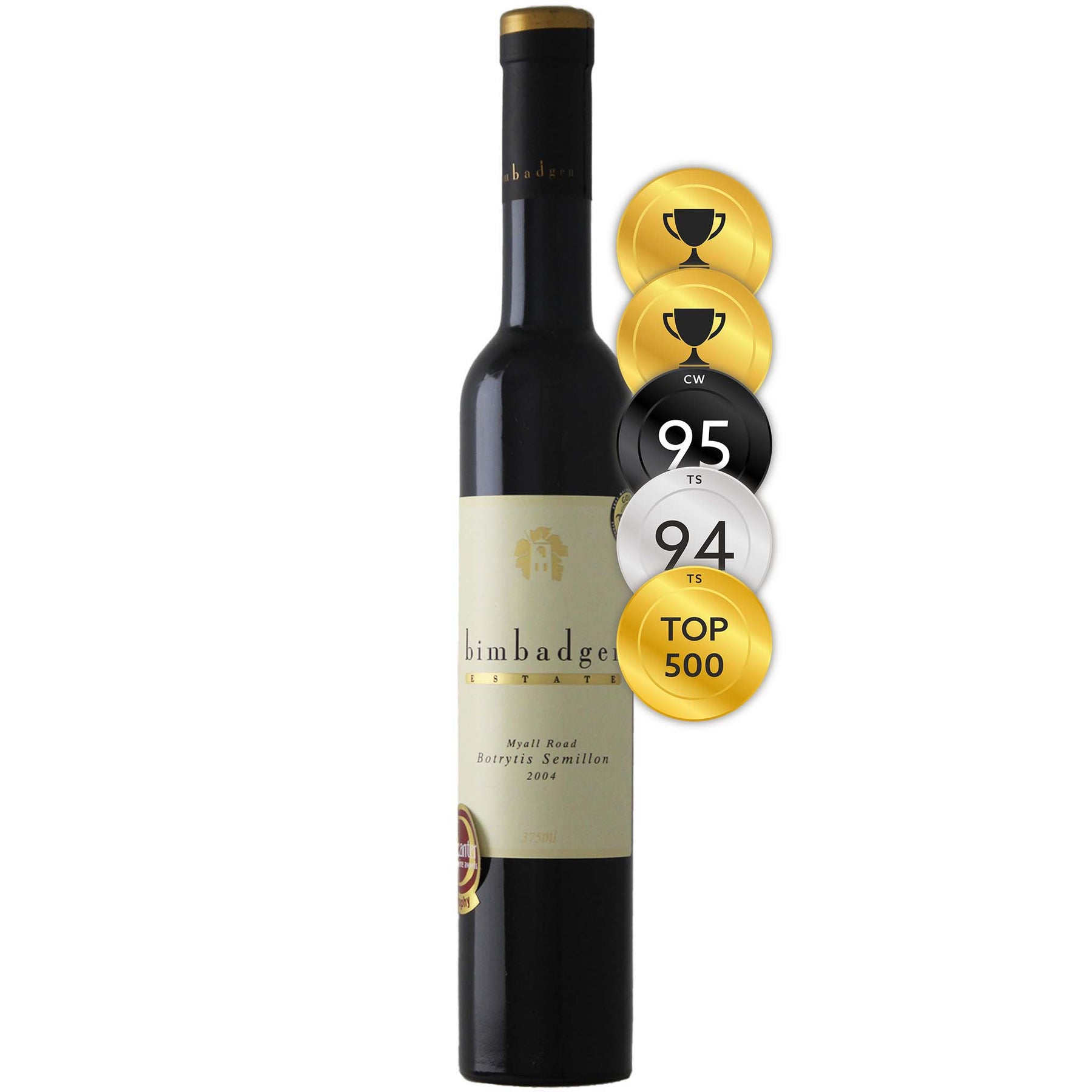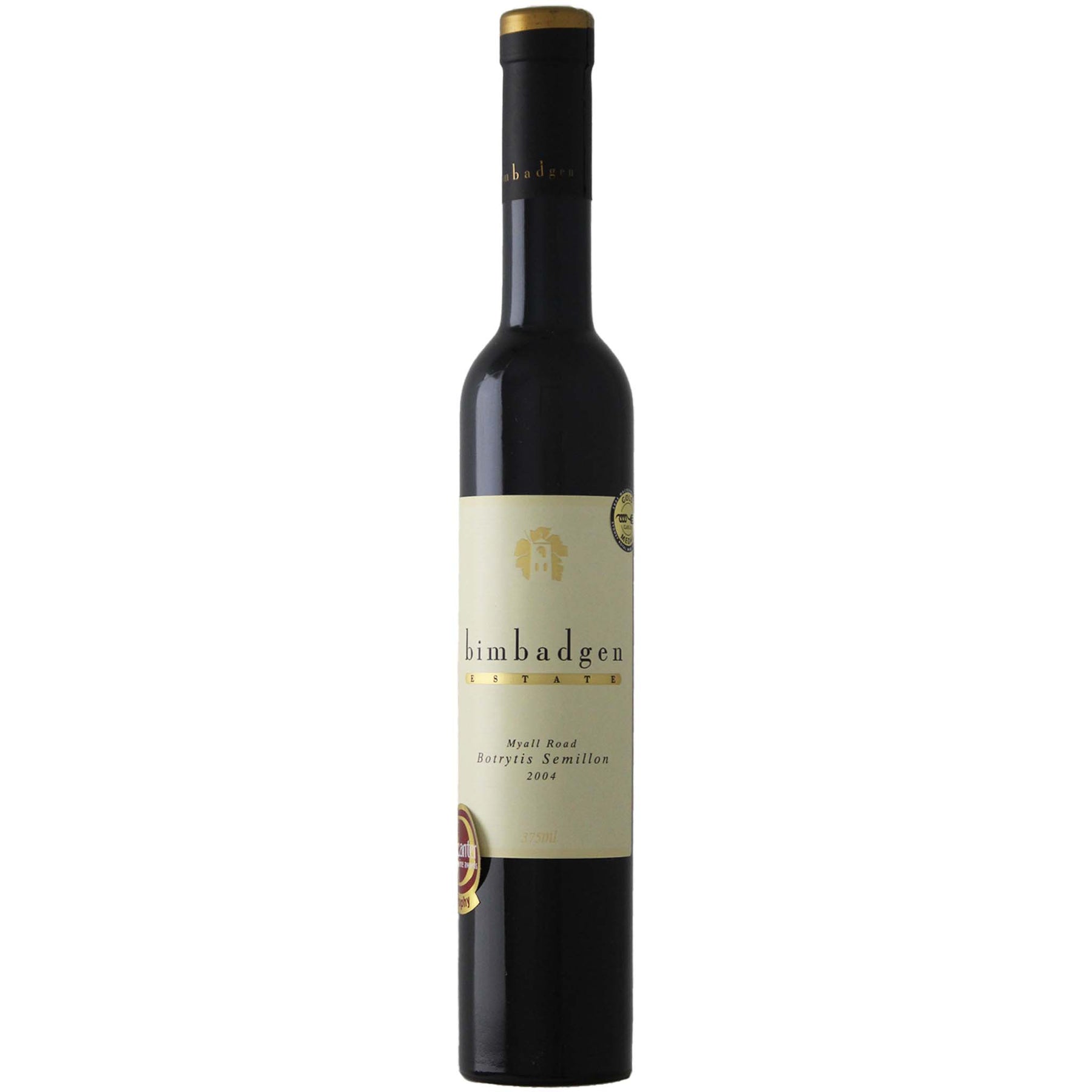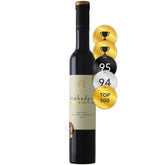

Bimbadgen Estate Myall Road Botrytis Semillon 2004 (375ml)
Style: Dessert White Wine
Closure: Cork
Bimbadgen Estate Myall Road Botrytis Semillon 2004 (375ml)
Warehouse
34 Redland Drive
Vermont VIC 3133
Australia
Producer: Bimbadgen
Country: Australia
Region: Riverina
Vintage: 2004
Critic Score: 95
Alcohol: 10%
Size: 375 ml
Drink by: Now
Trophy, Best Dessert Wine Under ₤10 - 2005 Decanter World Wine Awards
Trophy for Best NSW Sweet White Wine - 2005 NSW Wine Awards
Fruit for the trophy winning 2004 Bimbadgen Estate Myall Road Botrytis Semillon were harvested from the Myall Road vineyard at Yenda, a town in the Riverina region of New South Wales. The wine is a delicious dessert wine with high levels of botrytis (the fungus Botrytis Cinerea), which has much more in common with a French Sauterne than many of the overtly sweet and rich examples from our shores.
"This dessert-styled semillon, made from grapes grown at Yenda, is all lemon and butter and apricot and honey, and the moment it hits your lips is the moment the word 'value' pops up too." Campbell Mattinson
Expert reviews
"The wine has a fabulously complex, perfumed nose of citrus and apricots with masses of botrytis. When wines have this level of botrytis (and hence complexity), I often find myself content just sniffing the wine - but in the end curiosity always gets the better of me and I have to taste the goods! The palate is equally complex; bursting with lemon, lime and apricot flavours that are perfectly balanced by refreshing acidity. A wine of great depth and elegance, that has much more in common with a French Sauterne than many of the overtly sweet and rich examples from our shores." Nick Munday, Canterbury Wines - 95 points and Special Value Wine ★
"Picked at a whopping 32 baume (translation: very ripe and very sweet!), this is an intense apricot-powered dessert wine. The bouquet is quite delightful with fresh, intense lemon/marmalade and tropical fruit over a buttery smoothness. The palate adds an interesting touch of mushroom complexity and great length. It doesn't have the acidity or structure to age long, but it's lacking nothing now, so dig in! Value plus! Best drinking around: 2005-2008." Tyson Stelzer, Top 500 Wines 2005-2006 – 94 points, Top 500 Wines 2005-2006
"This dessert-styled semillon, made from grapes grown at Yenda, is all lemon and butter and apricot and honey, and the moment it hits your lips is the moment the word 'value' pops up too." Campbell Mattinson, The Wine Front – Best Hunter Wines
Awards
Special Value Wine – Canterbury Wines ★

New South Wales
New South Wales is home to more than 500 wineries across 16 wine regions that produce a range of extremely diverse wines. The regions are Canberra District, Cowra, Gundagai, Hastings River, Hilltops, Hunter Valley, Mudgee, Murray Darling, New England, Orange, Perricoota, Riverina, Southern Highlands, Shoalhaven Coast, Swan Hill and Tumbarumba.
Hunter Valley is New South Wales' best known wine region and has long stolen much of the spotlight . It is also Australia’s oldest continuous wine region - the first vineyard at Wyndham Estate was established in 1828 using cuttings supplied by viticulturist James Busby, widely considered the father of Australian wine. Semillon is perhaps the most iconic wine of the Hunter Valley and is among the greatest and most distinctive wines of Australia - if not the world.
New South Wales' wine regions have a wide range of microclimates. The Great Dividing Range has a substantial influence on the climate of many of the viticultural areas. The regions of higher elevation, such as Canberra District, Canberra District, Orange and Tumbarumba have cooler climates with more continental influences. These regions are responsible for some of the State's most enticing chardonnay, shiraz, cabernet sauvignon, riesling and sauvignon blanc. They, together with the Hunter Valley, which by contrast, is very warm, with high humidity and a large amount of rainfall during the growing and harvest season, produce the bulk of the high quality wine in New South Wales.

